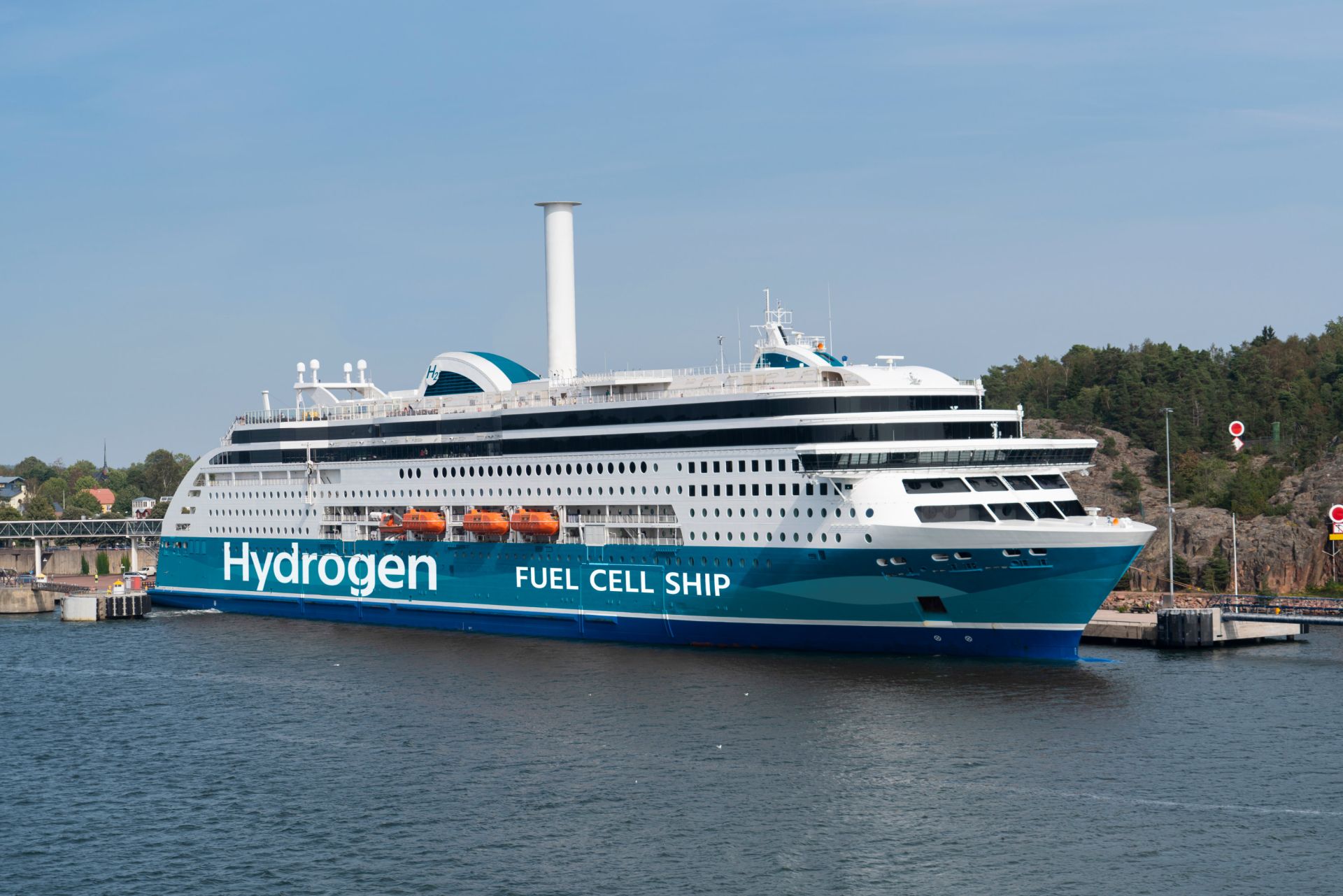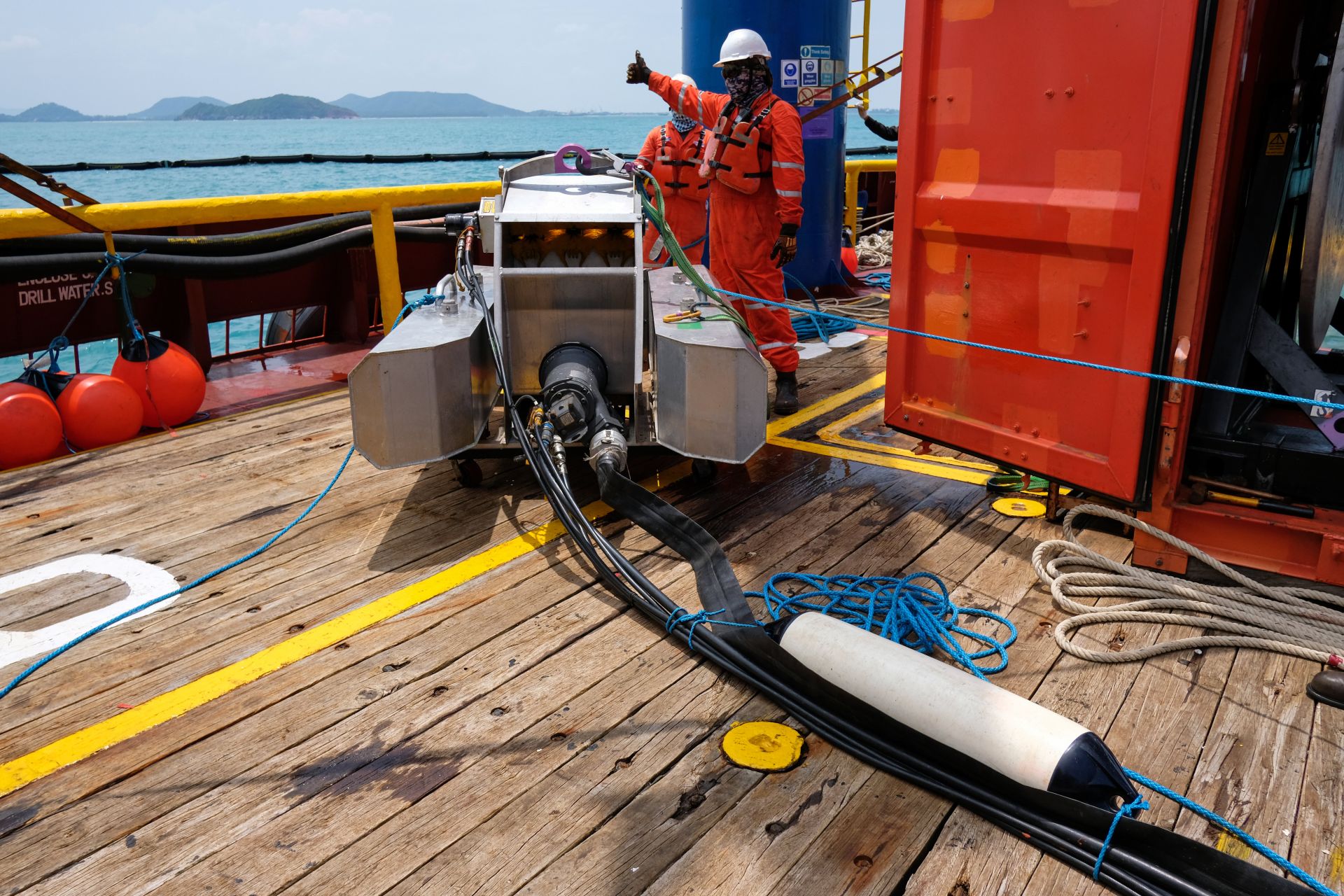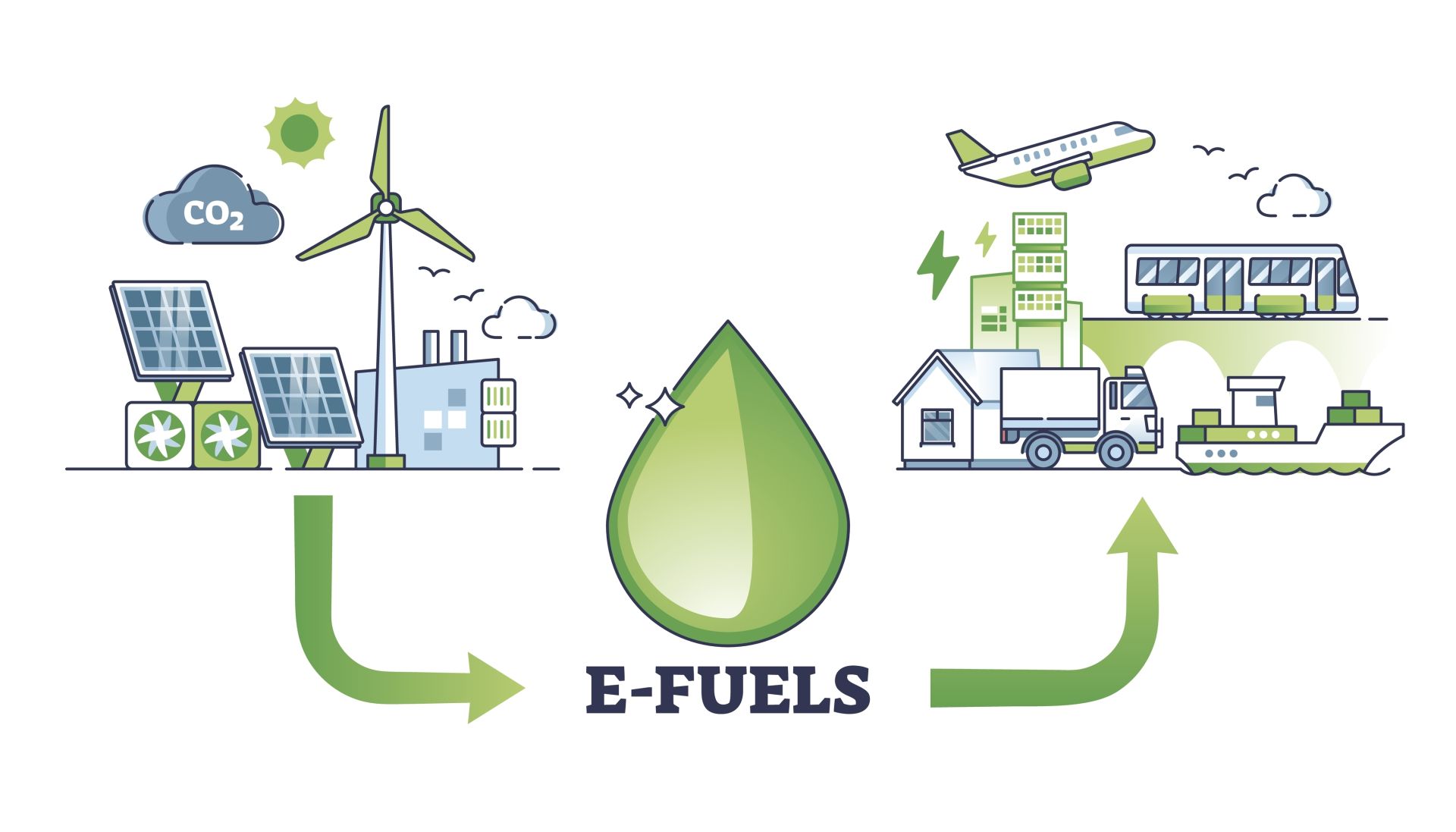Advancing Sustainability: The Shift to Green Fuels in Maritime Operations
Introduction
In an era marked by heightened global awareness of environmental issues, the maritime industry is increasingly under pressure to pivot towards more sustainable practices. Traditional marine fuels, such as heavy fuel oil, have powered the world's shipping fleets for decades but come with a high environmental cost, emitting significant levels of sulfur oxides, nitrogen oxides, and carbon dioxide. These emissions contribute not only to global warming but also to air pollution, which poses serious health and environmental risks.
Recognizing the urgent need to reduce these emissions, the maritime sector is exploring alternative energy sources that can mitigate environmental impact while maintaining the efficiency of global trade networks. Green fuels—specifically hydrogen, biofuels, liquefied natural gas (LNG), and ammonia—emerge as frontrunners in this transformative shift. Each of these fuels offers distinct advantages and challenges but collectively, they represent the industry’s commitment to align with global emission regulations and pave the way for a more sustainable maritime future.

Hydrogen, with its high energy yield and zero carbon emission when used in fuel cells, holds promise for revolutionizing maritime energy systems. Biofuels, produced from organic materials, offer a renewable solution that can often be used within existing engine designs and infrastructure. LNG, while still a fossil fuel, burns cleaner than conventional marine fuels, significantly reducing the emission of sulfur oxides and particulate matter. Ammonia, though toxic, can be a potent energy carrier with zero carbon emissions at the point of combustion, provided it is produced from renewable energy sources.
As the maritime industry explores these options, the transition to green fuels is not merely a technical shift but also a strategic realignment towards long-term sustainability. The path forward involves complex considerations—balancing cost, infrastructure development, safety standards, and regulatory compliance—to ensure that the adoption of green fuels is both viable and effective. In this blog, we will delve deeper into each of these green fuels, examining their potential to transform maritime energy and the inherent challenges that must be addressed in their wider adoption.
The Challenges of Implementing Green Fuels
Technical and Safety Challenges
Infrastructure Needs
Adopting green fuels necessitates substantial changes to the maritime industry's infrastructure. This transformation includes developing new fuel storage facilities and bunkering stations that can handle the unique characteristics of each type of green fuel. For example, hydrogen, which must be stored at high pressures or at cryogenic temperatures, requires entirely new fueling infrastructure compared to traditional fuels. LNG also demands specific storage solutions to maintain its low temperature. These infrastructural updates represent a significant hurdle but are essential for the safe and efficient adoption of green fuels.
Safety Protocols and Standards
Each green fuel comes with its own set of safety challenges, necessitating the creation of specialized safety protocols and standards. For instance, hydrogen is highly flammable and can be explosive under certain conditions, requiring robust safety measures to manage risks during storage and refueling. Ammonia poses risks due to its toxicity and corrosiveness, necessitating stringent controls to protect both human health and the environment. Establishing these protocols involves not only new technologies but also comprehensive training for maritime personnel to handle these fuels safely.
Economic Implications
The transition to green fuels carries significant economic implications. The initial setup costs for new fueling infrastructures are considerable, and there may be ongoing costs associated with the maintenance and operation of safer, more complex systems. However, these should be considered against the backdrop of potential long-term savings. Green fuels can reduce the costs associated with emissions penalties and align companies with future regulations that might otherwise impose heavy fines or restrict access to certain markets. Additionally, as the global community moves towards more sustainable energy sources, early adoption of green fuels could position maritime companies as leaders in an evolving market, potentially leading to economic benefits from increased customer trust and business opportunities aligned with sustainability goals.
Focusing on Hydrogen: A Case Study
Why Hydrogen?
Hydrogen is prefigured as one of the most promising green fuels for the maritime industry due to its exceptional properties and the potential for reducing greenhouse gas emissions. It possesses a high energy-to-weight ratio, making it one of the most efficient fuel sources available—far surpassing traditional marine fuels in terms of the energy it can deliver per unit mass. Furthermore, when hydrogen is used in fuel cells, it produces electricity through a chemical reaction rather than combustion, with water as the only byproduct, thus eliminating emissions of CO2, NOx, SOx, and particulates.

The Science of Hydrogen Energy
The core advantage of hydrogen lies in its abundant availability and the versatility of its production methods. Hydrogen can be produced from various resources such as water, natural gas, and biomass, and through different processes including steam reforming, electrolysis, and biological reactions. For maritime applications, 'green hydrogen'—produced via the electrolysis of water using renewable energy sources—holds particular appeal because it aligns with global sustainability goals.
However, hydrogen also poses significant challenges. Its low volumetric energy density means it requires high pressures or liquefaction for storage and transportation, which can be technologically demanding and costly. Additionally, hydrogen is highly flammable, requiring advanced safety measures to prevent and control leaks and explosions, especially in the confined spaces typical of maritime environments.
Developing Safe Refueling Protocols for Hydrogen
Challenges of Hydrogen Refueling
One of the critical issues with hydrogen fuel in maritime settings is developing safe and efficient refueling protocols. Hydrogen’s physical properties require it to be stored at extremely high pressures (up to 700 bar) or very low temperatures (-253 degrees Celsius when liquefied). Each method presents unique challenges:
- High-Pressure Storage: Ensuring the integrity of storage tanks and fuel systems at high pressures is paramount. Special materials and technologies are needed to handle these pressures, and the refueling infrastructure must be designed to manage the risks of hydrogen embrittlement—a phenomenon where metals become brittle due to hydrogen exposure.
- Cryogenic Storage: Liquefied hydrogen needs insulated and refrigerated tanks to maintain its low temperature. The refueling process must prevent rapid temperature changes that could cause mechanical stresses and potential failures in the containment system.
Current Advancements and Research
Significant research is currently underway to address these challenges. Innovations include the development of more robust tank materials that can withstand hydrogen’s properties, advanced venting systems to manage the risks of gas accumulation, and sensors capable of detecting the smallest hydrogen leaks.
Furthermore, pilot projects around the world are testing hydrogen refueling systems to refine the processes and technologies involved. These projects are crucial for establishing best practices and safety standards that can be adopted internationally, ensuring that hydrogen can be safely integrated into the maritime fuel mix.
Global Regulations and Their Impact
International Maritime Organization (IMO) Regulations

The International Maritime Organization (IMO) plays a pivotal role in shaping the global regulatory landscape for maritime operations, particularly concerning environmental standards. The IMO's regulations are crucial in driving the maritime industry towards more sustainable practices, including the adoption of green fuels.
Overview of IMO 2020
One of the most significant recent regulations is IMO 2020, which came into effect on January 1, 2020. This regulation drastically reduces the maximum sulfur content in marine fuels used outside designated emission control areas from 3.5% to 0.5%. This change aims to decrease the amount of sulfur oxide emissions from ships, which are harmful to human health and contribute to environmental issues like acid rain and photochemical smog.
The implementation of IMO 2020 has had profound implications for fuel usage in the maritime industry. It has prompted a shift from high-sulfur fuel oils to lower-sulfur alternatives, including marine gasoil and LNG, and has accelerated interest in developing and deploying other green fuels like hydrogen and biofuels. While LNG primarily addresses the sulfur cap, it also offers reductions in other pollutants, positioning it as a transitional fuel towards achieving further environmental targets.
Future Regulatory Landscapes
Looking ahead, the IMO has set ambitious targets for reducing greenhouse gas emissions from ships. In April 2018, the IMO adopted an initial strategy on the reduction of greenhouse gas emissions from ships, setting a vision to reduce total annual GHG emissions by at least 50% by 2050 compared to 2008 levels while pursuing efforts towards phasing them out entirely within this century. This strategy underscores the need for the maritime industry to accelerate its adoption of zero-carbon fuels and technologies.
The roadmap to 2050 is expected to involve increasingly stringent regulations, not just on sulfur emissions but also on carbon and other pollutants. Future regulations may include carbon pricing mechanisms such as a carbon tax or a cap-and-trade system specifically tailored for maritime emissions, mandating further shifts in fuel technology and ship design.
How Regulations are Shaping the Adoption of Green Fuels
Regulations such as IMO 2020 and the forthcoming 2050 GHG reduction targets are significant catalysts in the maritime industry's shift towards green fuels. These regulatory frameworks compel shipping companies, fuel producers, and maritime technology firms to invest in research and development of alternative fuels and propulsion systems that meet the new standards.
Moreover, as regulatory pressures increase, the economic case for early adoption of green technologies strengthens. Companies that proactively embrace these changes can benefit from reduced regulatory risks and enhanced competitiveness in a more environmentally conscious market. Additionally, regulations help level the playing field, ensuring that the move towards green fuels is a collective effort, thus accelerating industry-wide changes.
The Role of Training and Crew Adaptation
Necessity for Crew Training

As the maritime industry transitions to green fuels, the importance of comprehensive crew training cannot be overstated. The adoption of new technologies and fuels introduces a complex array of operational challenges and safety risks. Effective training is crucial not only for maximizing the efficiency and benefits of these new systems but also for ensuring the safety of the crew and the environment.
Importance of Training Maritime Staff in Handling New Technologies
The shift to green fuels such as hydrogen, LNG, ammonia, and biofuels necessitates a fundamental change in ship operation and fuel handling procedures. Each of these fuels has unique properties and associated risks. For example, hydrogen is highly flammable and requires handling under high pressure or extremely low temperatures, while ammonia is toxic and corrosive, demanding specific safety precautions to avoid exposure.
Training programs must therefore be designed to educate maritime staff on these unique characteristics and the safe handling, storage, and emergency response procedures related to each type of green fuel. Additionally, crew members need to be trained in the operation of any new or modified equipment they will be using, from fuel cells and scrubbers to new engine types and fuel management systems.
Case Examples of Training Programs and Initiatives
- Maersk Line's LNG Training Program: In preparation for its transition to using LNG-powered vessels, Maersk Line has developed a comprehensive training program for its crew. This program includes simulator-based training that covers LNG bunkering, handling, and safety procedures, alongside real-world operational training aboard LNG-powered ships.
- MOL Group’s Hydrogen Safety Training: Mitsubishi Ore Transport (MOL) Group has introduced specialized training programs focusing on hydrogen safety. These programs are designed to equip the crew with knowledge about hydrogen’s properties, including its flammability, leak detection, and emergency response techniques.
- Ammonia Handling Workshops by NYK Line: Nippon Yusen Kaisha (NYK) Line conducts workshops and training sessions on the safe handling of ammonia as a marine fuel. These workshops address the specific risks associated with ammonia and include practical training on protective equipment and leak containment.
Future Directions in Crew Training
Looking ahead, the role of virtual reality (VR) and augmented reality (AR) technologies in training is set to increase. These tools can simulate a range of scenarios that crew members might face, from fuel leak emergencies to routine maintenance and troubleshooting, providing a safe and controlled environment for skill development.
Moreover, the development of standardized training curricula by regulatory bodies and industry associations will likely play a crucial role in ensuring that training across the industry meets a high standard of quality and comprehensiveness. This standardization ensures that all maritime personnel, regardless of their employer, have the skills and knowledge necessary to safely and effectively work with green fuels.
Looking Ahead: The Future of Green Fuels in Maritime
As the maritime industry progresses towards a more sustainable future, the continuous evolution of technology and global trends plays a pivotal role in shaping the adoption and efficiency of green fuels. Let’s explore the innovative technologies on the horizon and how the industry is adapting to these new fuel types.
Technological Innovations
Upcoming Technologies in Green Fuel Applications
The development of new technologies is crucial for overcoming the current limitations associated with green fuels. Innovations in several key areas are expected to drive significant changes:
- Advanced Fuel Cell Technology: Fuel cells convert the energy produced by chemical reactions directly into electricity and heat without combustion. Innovations in fuel cell technology, especially those using hydrogen and ammonia, are becoming more efficient and less expensive, which could make them viable options for powering large vessels.
- Improved Energy Storage Solutions: As the efficiency of battery technologies improves, hybrid systems that combine batteries with green fuels like hydrogen could become more prevalent. These systems can help manage the load and provide energy during peak times, reducing the total amount of fuel needed and enhancing the overall efficiency of maritime operations.
- Carbon Capture and Storage (CCS) on Ships: Although still in the early stages of development, integrating CCS technology on ships could enable the use of carbon-based green fuels like biofuels without increasing the carbon footprint. This technology captures CO2 emissions produced during fuel combustion and stores it safely, preventing it from entering the atmosphere.
- Synthetic and E-fuels: These are manufactured using renewable energy to convert water and CO2 into fuels. Such fuels are still under development but hold promise for their potential to be carbon-neutral and compatible with existing propulsion technologies.
Industry Adaptation and Global Trends
How the Industry is Adapting Globally to New Fuel Types
The global maritime industry is increasingly embracing green fuels, driven by regulatory pressures, environmental consciousness, and advancements in technology. Shipping companies are experimenting with various types of green fuels to assess their viability and integrate them into their operations. For instance, major shipping lines are already deploying LNG-powered ships and have plans to test hydrogen and ammonia as fuel sources in pilot projects.

Future Predictions for Green Fuels in Maritime Operations
Looking forward, the industry’s shift towards green fuels is expected to accelerate:
- Regulatory Influence: As international regulations become stricter, there will be a greater push towards adopting greener fuels. This regulatory environment will likely encourage more innovations and investments in alternative fuels and associated technologies.
- Economies of Scale: As more companies invest in green technologies, the costs associated with these fuels and technologies are expected to decrease, thanks to economies of scale. This will make green fuels more competitive with traditional fossil fuels.
- Global Collaboration and Standardization: To facilitate a smooth transition to green fuels, there will be an increased focus on global collaboration and the standardization of regulations and practices. This includes safety standards, fuel specifications, and bunkering protocols.
- Public and Private Partnerships: Enhanced cooperation between governments and private sectors will play a crucial role in funding research and infrastructure development necessary for the widespread adoption of green fuels.
Conclusion
The transition to green fuels in the maritime industry represents a crucial pivot towards sustainability and environmental responsibility. As we have explored, this shift is not just about complying with current regulations but about setting a course for a more sustainable future in global shipping. The adoption of alternative fuels such as hydrogen, LNG, biofuels, and ammonia offers the potential to significantly reduce the maritime sector's environmental footprint by cutting down on greenhouse gas emissions and other pollutants.
However, the path forward is complex and filled with challenges, including the need for new infrastructure, rigorous safety protocols, substantial economic investments, and comprehensive crew training. Overcoming these challenges requires ongoing innovation in fuel technologies, propulsion systems, and operational strategies. Furthermore, as these green technologies evolve, they will likely become more cost-effective and efficient, ultimately leading to broader adoption across the industry.
Call to Action for Industry Stakeholders
To accelerate the transition to green fuels, concerted efforts from all maritime industry stakeholders are essential. This includes:
- Investment in Research and Development: Continued innovation is vital for improving the efficiency and viability of green fuels. Stakeholders should invest in R&D to enhance fuel technology, safety measures, and operational protocols.
- Building and Upgrading Infrastructure: The establishment of specialized infrastructure for new fuels is a critical step towards their adoption. Investments are needed to build new fueling stations, upgrade ports, and retrofit ships to handle alternative fuels.
- Expanding Training Programs: As new technologies and fuels emerge, updating training programs to educate maritime personnel about these changes is crucial. Investing in comprehensive training ensures that crew members are prepared to handle new fuels safely and efficiently.
- Collaboration and Regulation: Policymakers, industry leaders, and academic institutions must work together to create a regulatory framework that supports the adoption of green fuels. This includes standardizing safety protocols, fuel specifications, and emissions monitoring practices.
The journey towards green fuels in maritime operations is an ambitious yet vital endeavor for the health of our planet. By embracing these changes, the maritime industry not only contributes to environmental protection but also positions itself at the forefront of technological innovation and sustainable development. Stakeholders are encouraged to lead the charge by investing in the technologies and strategies that will define the future of maritime transportation.
References
- International Maritime Organization (IMO). (2020). Initial IMO Strategy on Reduction of GHG Emissions from Ships. Retrieved from http://www.imo.org
- Maersk Line. (2021). Maersk's Approach to Alternative Fuels for Shipping. Retrieved from https://www.maersk.com
- Mitsubishi Ore Transport Co., Ltd. (MOL). (2022). MOL's Commitment to Safety Training for Hydrogen Handling. Retrieved from https://www.mol.co.jp
- Nippon Yusen Kaisha (NYK) Line. (2021). Training for Safe Ammonia Handling. Retrieved from https://www.nyk.com
- International Energy Agency (IEA). (2021). The Future of Hydrogen: Seizing Today's Opportunities. Report prepared by the IEA for the G20, Japan. Retrieved from https://www.iea.org
- Lloyd's Register. (2020). Zero Carbon Fuel Monitor: Evaluating Ship Fuel Transition. Retrieved from https://www.lr.org
- The Maritime Executive. (2021). The Role of LNG in the Future of Marine Fuel. Retrieved from https://www.maritime-executive.com
- Renewable Energy World. (2022). How Renewable Energy Can Drive the Maritime Industry Towards a Sustainable Future. Retrieved from https://www.renewableenergyworld.com




